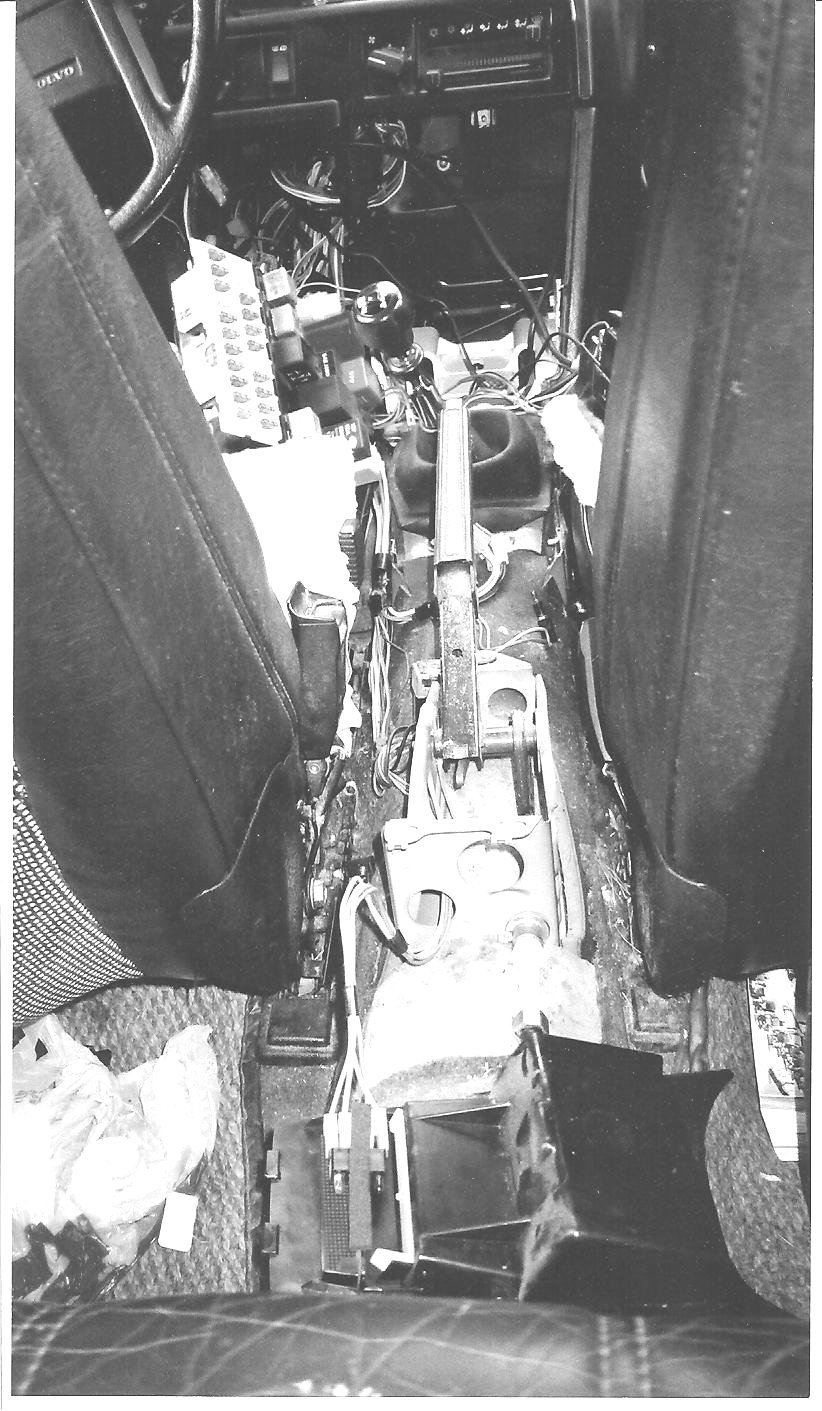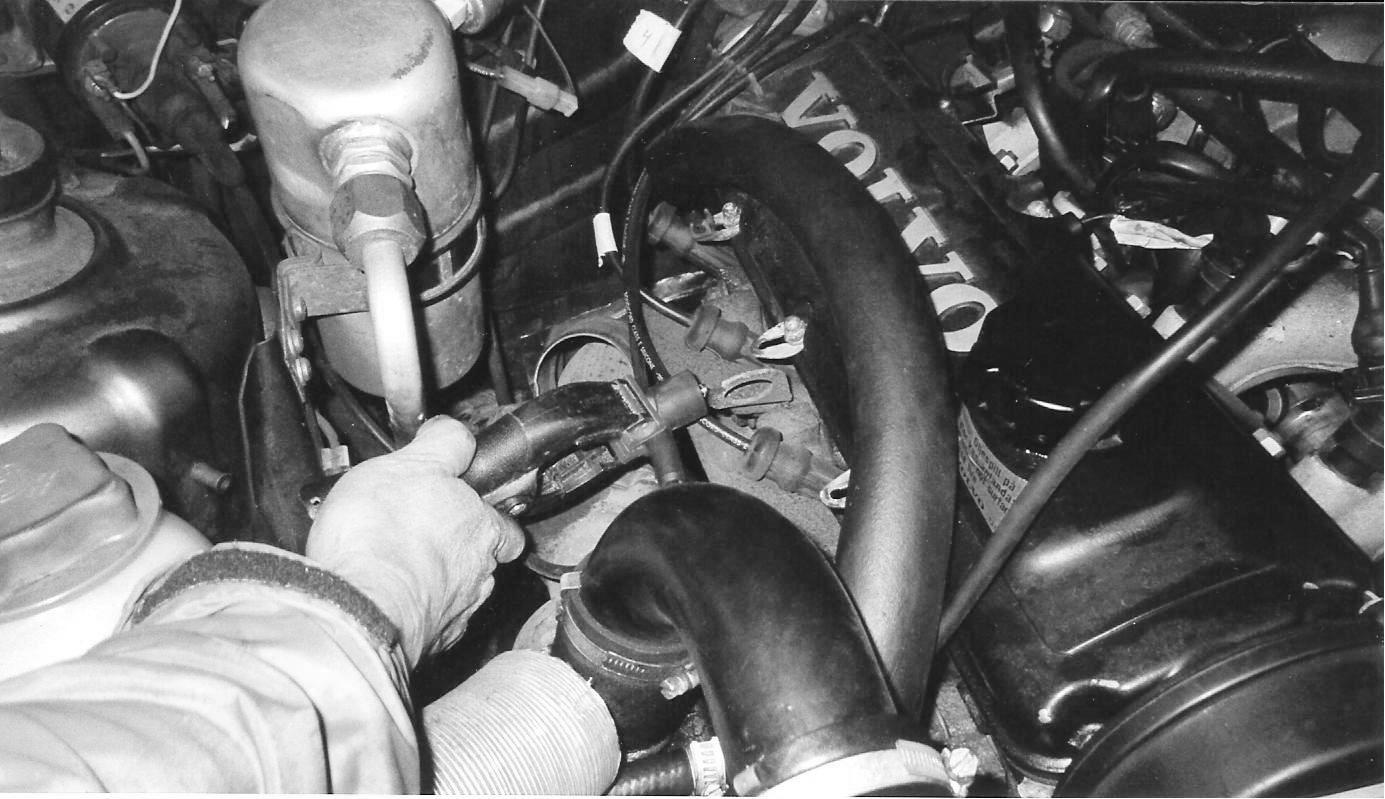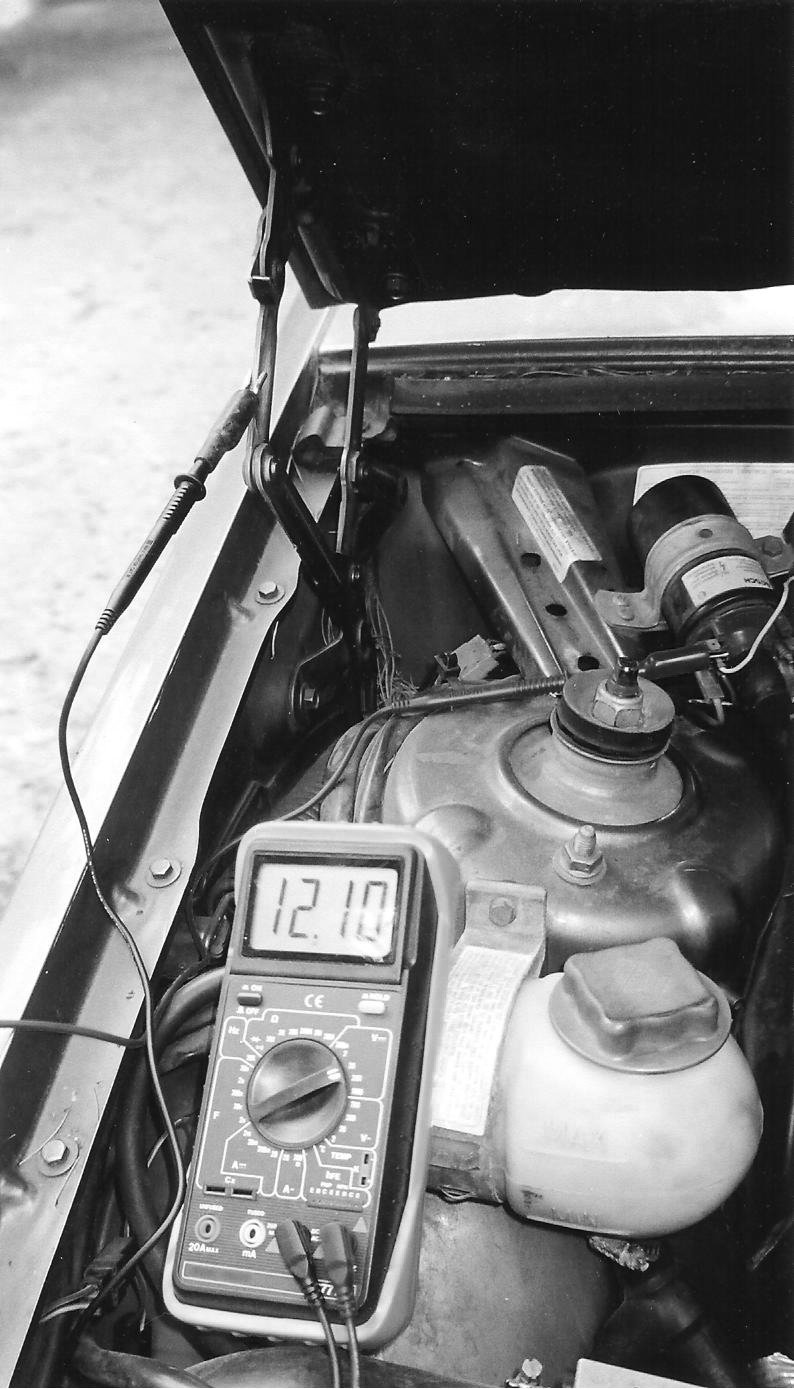When you don't know what you're doing, you can create a MESS, like I did chasing after red herrings!
Instead, download my step-by-step guide to help you track down a likely suspect for your no-start.

Learn from my mistakes!
Diagnosing No-Starts on Some 740/940
Volvos
|
most likely suspects for no-starts on your 740/940 Volvo. |
|
When you don't know what you're doing, you can create a MESS, like I did chasing after red herrings! Instead, download my step-by-step guide to help you track down a likely suspect for your no-start. |
 |
Learn from my mistakes! |
Addendum1: Ignition "On," battery
warning light is off. (Following is from memory, so I'm
not sure if it is correct). When cranking and engine does not
start, battery warning light is on. Symptoms imply a faulty
alternator or connections to it. In my case, one of the brushes
had become stuck in the up position, so that it was not contacting
the slip ring. If your alternator does not work, no current is
fed to the fuel injection system and your engine will not start.
Addendum2: One of my readers, Cameron Mael, has found a fault
with my diagnosis. And he is right! When conducting the spark
test, he suggests first testing the spark plug wire (#1 is standard)
rather than the coil high tension wire from the distributor. Why?
Because if there is something wrong with the distributor rotor
or cap, there is no current sent to the spark plugs. If there
is no spark at the spark plug wire and there is spark using the
high tension wire, then the problem is in the rotor or cap. Well
done, Cameron! Thanks. [One way to test for spark at the spark
plug wire is to pull the #1 plug, plug it into the #1 spark plug
wire, lay the metal side of the plug against the engine block,
and have an assistant crank the engine. (Use a plastic grip or
salad tongs to hold the spark plug against the engine.) Look for
spark at the spark plug gap. I have not yet instituted these instructions
into the guide.]
Addendum3: Modify the no-start how-to guide in the following manner
for fuel test. At Ignition "Start," with fuse 11 pulled,
if there is no fuel coming from the rail, then instead of checking
the main fuel pump next, do the following first. (See the guide.)
In the middle console, where all the relays are, pull the white
fuel pump relay out of the blue socket and use a jumper wire to
connect terminals "30" and "87/2" in the blue
socket (key out of ignition). If you hear a whir, then the main
fuel pump is fine. (This step just saved you having to go under
the vehicle.) If there is no whir, then you need to test the main
fuel pump directly by going under the vehicle.
|
There are many possible causes for a no-start. While not exhaustive, this manual covers the most likely suspects right up to the fuel system Electronic Control Unit (ECU) and ignition Electronic Control Unit (IECU), where my expertise ends. Having chased many red herrings (and needlessly spent money) as a do-it-yourselfer, I now adhere to the motto: “Be informed. Check twice, buy once.” Diagnosis is done without the use of fault codes or an oscilloscope. How so? In the end, a computer delivers certain voltage or current values to components under certain conditions, and a lot can be discerned by testing for those end results. My Volvo is a 1987 740 turbo, B230FT, L-H Jetronic 2.2, EZ 117K ignition, manual transmission. So, instructions are mainly for this model, but advice here may help you with other models and variations. Exceptional wiring diagrams are available for different fuel injection and ignition systems at www.autoelectric.ru/auto/volvo/740/1989/740-89.htm for the 740 and www.autoelectric.ru/auto/volvo/940/1993/940-93.htm for the 940. Refer back to these schematics as the standard. (Oh, and one thing, the wires for the EZ117K Ignition System, B230FT, are reversed for #1 and #3 terminals on 5, the distributor (Hall sensor). #1 lead is black, #3 lead is red.) A dead engine has three possible culprits: mechanical, electrical, or fuel. 1. No or little noise on ignition “Start” (engine does not turn over or crank) or grinding screech. Check for 12 volts DC at battery terminals (note: a faulty battery will quickly drop to 9-10 volts when under load). Also clean battery cable ends and battery posts. Other possibilities are the starter solenoid and starter (grinding screech) and ignition switch and circuit. 2. Engine cranks but doesn’t run on ignition “Start”—the symptom for all following tests. Be sure you have gas (and not water; I once had that problem!). Then check that fuse 1 (main fuel pump and fuel injection system) is intact. |
 Figure 1. Test for spark. Pull coil high tension wire from distributor. Use plastic grip to hold end 1/8” from metal on engine block while assistant cranks engine. Don’t overdo cranking. |
3. Mechanical. Check timing belt. Lift oil filler cap to view overhead camshaft while an assistant cranks engine. If camshaft rotates, the timing belt is fine. If the camshaft doesn’t rotate, your timing belt is likely broken. 4. Electrical. Pull the coil high tension wire from the distributor and hold its end about 1/8” from metal on the engine block (Figure 1). (Danger! Use a plastic grip or tongs, never “insulated” metal pliers or your bare hand! Perform test in dry environment.) With someone cranking the engine for 2-3 seconds, check for good spark. (Don’t overdo cranking, as some manuals warn it could damage sensitive electronics.) If no spark, go to Step 4a. If good spark is present, go to Step 5a. |
| 4a. No spark. In olden days, no spark from the ignition coil usually meant it was faulty or the coil primary contacts “1” and “15” were corroded. These days, other possible culprits include the Hall sensor or Power Stage—and they cannot be discounted. With ignition “On,” check for 12 volts DC at the primary lead of the coil (between “15” and ground—see Figure 2). If no 12 volts, trace back in ignition circuit. Also check . . . . (continued in booklet) |
 Figure 2. Check for 12 volts DC between “15” terminal on ignition coil and ground with ignition “On.” (Ground is sanded bare metal on hood hinge.) 12 volts between “1” and ground implies that the primary winding is fine. |
clicking on link below (Free!): Diagnosing No-Starts on Some 740/940 Volvos (6.73 Mb) Don't have Adobe Acrobat Reader? Download it for free from Adobe.com. (Note: This guide addresses a dead engine—not one that sometimes runs. It is much harder to isolate the cause for the latter, but conditions are constant for the former. ) |
If this article helped to fix
your no-start and saved you money, please print this page and
send along with a $6 check, payable to bytewrite, to
Also consider ordering a copy
of An American Sin (regularly $15; more info at www.bytewrite.com)
from your local bookstore. Or, order an autographed copy directly
from the publisher, with paid downloaded how-to article, and save
20%, plus get free shipping in U.S.! You'll be supporting a very
small press and help keep this information flowing for do-it-yourselfers.
Thank you!
| Name: __________________________________________ |
copy of An American Sin? |
| Address: _________________________________________ |
|
| ______________________________________________________ |
|
| ______________________________________________________ |
|
| Email: ___________________________________________ |
|
| Date: ________________________________ |
|
Pay for any other downloaded titles only if they meet your satisfaction!
|
|
|
|
|
||
| n | Diagnosing No-Starts on Some 740/940 Volvos (downloaded) |
|
|
|
|
| r | A Step-by-Step Guide to Changing the Timing Belt on the 240 Volvo non-B230 Engine (downloaded) |
|
|
|
|
| r | Replacing the 740 Waterpump (downloaded) |
|
|
|
|
| r | A Step-by-Step Guide to Changing the Timing Belt on the 740/940 Volvo (downloaded) |
|
|
|
|
| r | An American Sin (regular price $15; with any one paid download above, it's 20% off) |
|
|
|
|
You are not obligated to buy
An American Sin. Thank you for paying for the downloaded
how-to article!
|
Shipping of An American Sin within U.S. is free! |
$0.00 |
|
Shipping of An American Sin to Canada |
$4.66 |
|
Outside U.S. and Canada (please email for cost of shipping An American Sin) |
______ |
|
Publisher pays WA State Sales Tax. Please make check out to bytewrite. |
Grand Total: ____________ |